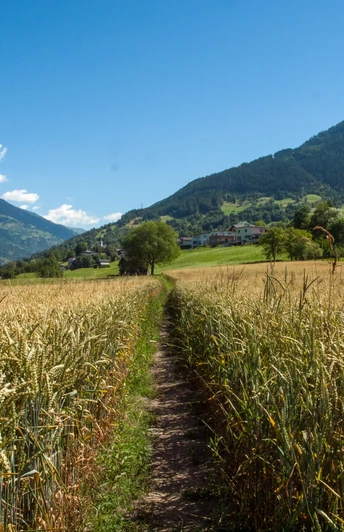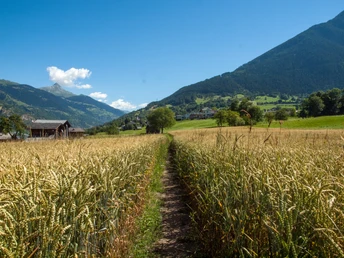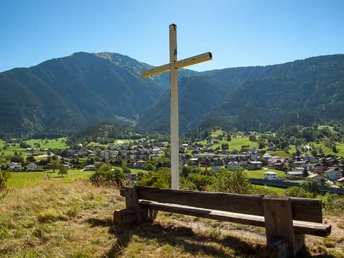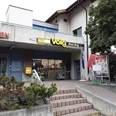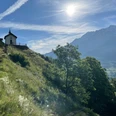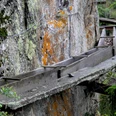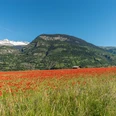- Photos & Map
How would you like to arrive?
- Description
- Good to know
- Nearby
Download GPX file
- 0:40 h
- 1.46 km
- 32 m
- 32 m
- 879 m
- 906 m
- 27 m
- Start: Ried-Brig
- Destination: Ried-Brig
You can reach the nature trail after a walk of just under an hour from Brig via the Biela. Alternatively, you can take the PostBus to Ried-Brig. The Achera Biela is an important part of the cultural heritage of the Ried-Brig/Termen region and was designated as a nature reserve of cantonal importance in 1994. The approximately 24-hectare area contains various valuable and partly rare habitats: traditionally and environmentally friendly cultivated arable land, species-rich meadows, rocky steppes, irrigation channels, dry stone walls, and terraces. After completing the circular trail, you can walk back to Brig in half an hour.
Prohibited are:
- letting dogs run freely
- leaving the paths
- making fires
- damaging and disturbing animals, plants, and habitats
- overnighting and camping
- throwing away and leaving garbage
- leaving dog waste
Good to know
Pavements
Best to visit
Directions
Tour information
Cultural Interesting
Loop Road
Stop at an Inn
Equipment
Directions & Parking facilities
Additional information
The Achera Biela in Ried-Brig and Termen was considered the arable land area at Brigerberg for centuries. The Romans brought grain to Valais over 2000 years ago, where it was cultivated in dry areas and soon became a typical sight. Over time, the characteristic cultural landscape with terraces, dry stone walls, barns, etc., developed. Until the middle of this century, this agriculture shaped the landscape. After World War II, the number of fields steadily decreased. In the Achera Biela area, the decline was so drastic that arable farming practically came to a halt in the 1960s. Bernhard Gemmet, an organic farmer in Ried-Brig, was the driving force that enabled a renaissance of traditional arable farming in the 1970s. Using modern machinery on consolidated plots but in a traditional manner, he was one of the first to cultivate winter cereal fields again. Several farmers followed his example, so today nearly 5 hectares are cultivated again. This area is divided among 6 farmers, with the plots per farmer varying in size. The seeds of the so-called arable weeds were able to survive the interruption of cultivation in the soil. Today, a rich, colorful arable flora can be admired again: cornflower, corncockle, cornfield wheat, larkspur, etc. For this valuable flora to be preserved, the cultivation of winter cereals is necessary.
On June 30, 1999, the State Council of the Canton of Valais placed the area under nature protection. It comprises about 24 hectares of agricultural land, which is about 6% of the total agricultural land in the municipality of Ried-Brig. Of the 14.3 hectares of open arable land cultivated in Ried-Brig in 1998, nearly 5 hectares lie within the nature reserve, corresponding to a proportion of 31%. In addition, the steppes, fallow land, traditionally irrigated meadows, hedges, and field groves are of great ecological importance. It goes without saying that both rare and special, as well as typical animal species can be observed in the area: Eurasian wryneck, Apollo butterfly, field cricket, emerald lizard, to name just a few.
Literature
Author´s Tip / Recommendation of the author
Safety guidelines
Map
Nearby





